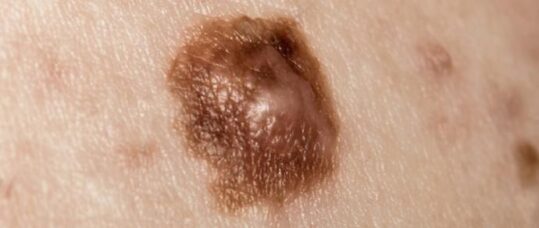‘I have a mole that’s getting bigger’


Related Article: ‘Patients not prisoners’: Palliative care nursing behind bars
‘Door-handle conversations’ is a series of articles giving advice on handling those last-minute disclosures in your consultations
|
You finish an annual review of one of your patients on statins, a 56-year-old man with a history of coronary heart disease who has not particularly adhered to his medication. After you’ve reminded him of the importance of taking his atorvastatin, he gets up to leave, then tells you about a mole on his back. ‘I’ve had it for a few months now,’ he says. ‘But my wife is convinced it’s getting bigger. Would you take a look?’ |
When dealing with a changing mole, the possibility of a malignant melanoma must never be overlooked. Melanoma skin cancer incidence rates have increased by 119% in the UK since the early 1990s, with 15,419 new cases identified during 2014.1
In 2015, NICE introduced the suspected cancer pathway referral guidelines for suspected malignant melanomas, highlighting that patients should be referred to secondary care within two weeks if they have a suspicious pigmented lesion with a seven-point checklist score of three or more.2 The checklist includes changes in size, irregular shape and colour (as seen in the picture, right), diameter, inflammation, oozing and changes in sensation.
Any potentially changing mole requires examination and monitoring. Time should be made to examine it there and then, and take a short history using the checklist. The next step will depend on the outcome of the history and physical examination. If there is suspicion that the lesion could represent a malignant melanoma, an unscheduled same-day review is necessary.
Related Article: NHSE confirms dates and eligibility for autumn Covid and flu jabs
Given the gentleman’s history of non-compliance with previous health advice, we must consider what might happen if we do not deal with this potentially serious issue while he is present in the clinic. Patients who fail to attend appointments can easily get lost to follow-up, and in the case of malignant melanoma, this could have catastrophic consequences. Being honest and open while keeping patients informed of potential waits is often a valuable way of reducing patient anxiety and the likelihood for non-compliance or complaints.
If upon taking a short history and examining the lesion according to the checklist, a score of three is reached, the patient requires urgent attention in the form of a same-day GP review. Where appropriate, an urgent two-week-wait referral to secondary care should be made for review by a qualified practitioner in a dermatology department. Patients should be made aware that they are being referred under a two-week-wait protocol, and the importance of attending should be stressed. We should also stress that if they do not receive an appointment within a short timescale, depending on the booking system in use, they must contact either the surgery or the hospital contact centre to chase this up.
Where a score of less than three is obtained, it is important the issue is not disregarded. The patient should have an appointment arranged with a GP soon, so that a more thorough examination and accurate description of the lesion can be made. Potential risk factors, including skin type, past sun exposure, and previous and family history of skin cancer should be assessed along with arrangements for future monitoring of any questionable lesions. Longer-term follow-up should also include health promotion emphasising the importance of regular skin examination, highlighting the warning signs of new and changing moles and promoting the importance of adequate sun protection.
References
Related Article: ‘Concerning acceleration’ in drug-resistant gonorrhoea ahead of vaccine programme
1 Cancer Research UK. Skin cancer statistics. cancerresearchuk.org/health-professional/cancer-statistics/statistics-by-cancer-type/skin-cancer
2 NICE. Suspected cancer: recognition and referral. NICE; 2015

See how our symptom tool can help you make better sense of patient presentations
Click here to search a symptom


Door-handle conversations is a series of articles giving advice on handling those last-minute disclosures in your consultations



